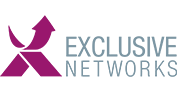Finance terms 101: what every channel IT professional needs to know

Knowing some basic finance terms will help you to manage money with confidence—without needing to take an accounting course.
Improving your understanding of finance can help you see how healthy your business is on the balance sheet, keep track of your cash flow to make sure you have enough money in the bank to adapt to change and see your profitability in black and white.
With the recent government Budget providing incentives for Aussie businesses looking to embrace technology as part of the JobMaker Digital Business Plan, you've got an opportunity to fast forward some of your business's tech plans. So here's the accounting basics you need to make the smart decisions and investments needed to run and grow your business.
Finance Terms: Get visibility of your business
A big part of managing your finances is having visibility of what's going on in your business. The key tools and reports to manage your finances are:
1. Your budget
A budget is your estimate of your income and spending over a period. It helps you think ahead and plan your spending to get to where you want to go. In addition to knowing how to navigate decision making, you'll need a basic understanding of finance to drive performance and add value to your business.
2. Your balance sheet
A balance sheet is a high-level view of your business on a specific date. It includes your business's assets and liabilities (debt you owe) and debt owed to you. Plus, any commitments to shareholders.
It will help you work out your net assets, your working capital (the money you need to run your operations day to day, and your business liquidity (how quickly you can pay your debts). It's ultimately a finance terms that will give you a good overall picture of your business's financial health.
Assets, liabilities and depreciation
An asset is anything that has value to and is owned by your business, including cash, things that can be sold for cash and accounts receivable—money owed to you.
Your fixed assets are part of your business for the long term. You don't expect to sell them in the coming financial year. This includes things like computers, printers, office furniture, manufacturing equipment and your fleet of trucks.
The finance term for non-physical assets is intangible assets. They include your intellectual property or any patents or trademarks.
Your business's liabilities include rent and utilities, the equipment you need to buy or rent, employees to be paid and inventory you need to buy. They also include your accounts payable—short- and long-term debt owed to your suppliers.
The value of an asset depreciates when it loses some of its value, including through wear and tear. It's a good idea for your business to keep a record of depreciation, so you can accurately see the decreased value of your assets.
Related - Finance for SME: Management, the power of data and terms you need to know
Related - How to crush the cash flow crunch and set your business up for growth in 2021
Accounts payable and receivable
Accounts payable, also known as AP, is a term you'll come across a lot. This is a record of your unpaid, short-term bills—your debt. This could be money you owe to your suppliers or lenders, invoices due, utility bills and tax.
Accounts receivable, or AR, is the money owed to your business by customers for the supply of products or services. These accounts are considered assets as this is cash that customers are legally obliged to pay you.
Running accounts receivable and payable reports regularly and understanding what's included in each will help you keep your cash flow in check. This allows you to plan to have enough money in the bank to pay your bills and prompts you to chase unpaid invoices.
Cash flow
Cash flow is a finance terms that describes the money that comes in and goes out of your business and how much cash you have in the bank to spend. It's usually measured over a set period, such as a month or quarter. A healthy cash flow is having enough money to pay what you owe when it's due.
Cash might come in from the sale of products or services that you provide, renting out office space or from investments that you've made. Maybe your IT department acts as its own cost centre; in which case you might receive licence subscriptions or IT support fees from the business.
Your expenses, or money going out, could include supplies, services, staff costs, equipment hire and storage costs.
Fixed cost vs variable cost
When you're putting your budget together, you'll come across fixed and variable costs. It's important to know the difference so you can understand your cash flow and prepare your budget accurately. If you can't distribute your costs correctly, you'll struggle to work out whether you have enough cash to meet your income and expenses.
- Fixed costs stay the same. They're not affected by production costs—your volume could go up or down, but your fixed costs will remain the same. They include things like your office space rent, depreciation, tax, insurance and your employees on a salary. Budgeting for fixed costs is relatively straightforward as amounts are fixed at least for the short term. These costs won't change month to month. Even though your tax and rent may change after a certain period, sometimes every year, they are considered fixed costs.
- Variable costs is a finance term that's tied to production levels. They include wages, commission, production materials and shipping costs. If your business has to ramp up production to meet demand, you might take on more contractors on hourly or daily rates or need to buy extra components. If production goes up, so do your variable costs.
- Utilities, such as electricity costs, can be both fixed and variable. If you run a manufacturing business, for example, this cost is more likely to fluctuate in line with demand than if you run a services business.
Profit and loss
Your profit and loss (P&L) statement, sometimes known as an income statement, is prepared by your finance team or accountant. The term P&L denotes the accounting, often monthly or quarterly, of your income and expenses.
Here are some terms you might see in your P&L:
- Gross profit - the money you make after deducting costs associated with providing goods or services
- Net profit - the money you've made after deducting costs such as taxes and operating costs like payroll and rent. This is your real income
- Net income - your income less the cost of goods, expenses and taxes
- Operating expenses - these are for general, or admin expenses—things like rent, payroll, and electricity bills
- Operating profit - what you're left with after you deduct operating expenses from your gross profit.
The key thing the P&L shows you is if your business or department has made more money than it has spent. It also helps you investigate trends, plan your budget and distribute resources, and see if any of your operations need to change to reduce expenses or to drive revenue.
Your P&L doesn't show you what you owe for things like money spent on new servers. It also doesn't show you your cash because that's not considered profit and can be affected by your purchases. You'd find information about these liabilities on your balance sheet instead.
What's the difference between cash flow and profit?
If you're not familiar with finance terms, you could be forgiven for thinking that profit is the most important thing to your growing business—a good indicator of whether things are going well. But it's cash that's king.
A positive cash flow shows that your business has more money moving in than out. A negative cash flow shows that you have more money moving out than in. So even if you're making a profit on paper, you can still have poor cash flow. This is why you need to be able to watch your cash flow closely—which is what the bank will do to figure out the financial health of your business.
Know the finance basics and plan with confidence
As an IT professional, understanding your finances in more detail is going to be a big advantage— especially when it comes to implementing new technology and the costs that go with it. All that stands in the way is a bit of accounting terminology. With knowledge of the basics, you'll be in a better position to track your cash flow, prepare your budget, adjust your outgoings and boost revenue. Plus, make informed decisions about your spending. For a deeper understanding of all things financial, check out the government's Business website.
Syamala Murigiah, CPA is Partner Success Manager at Wiise.











